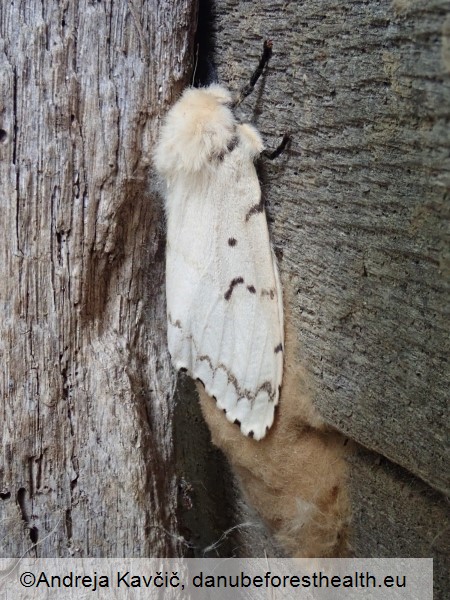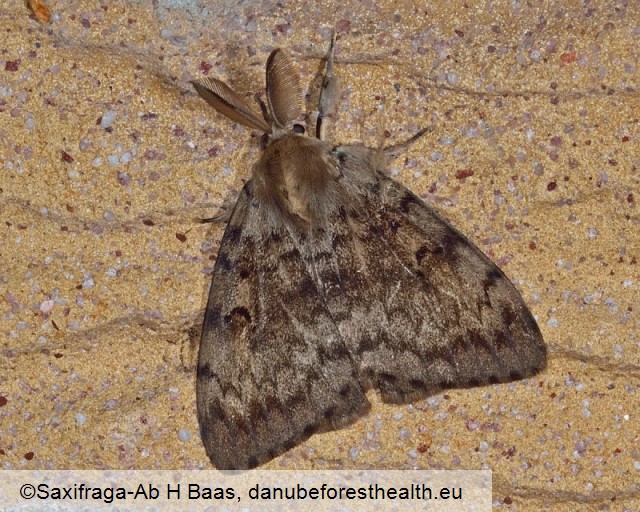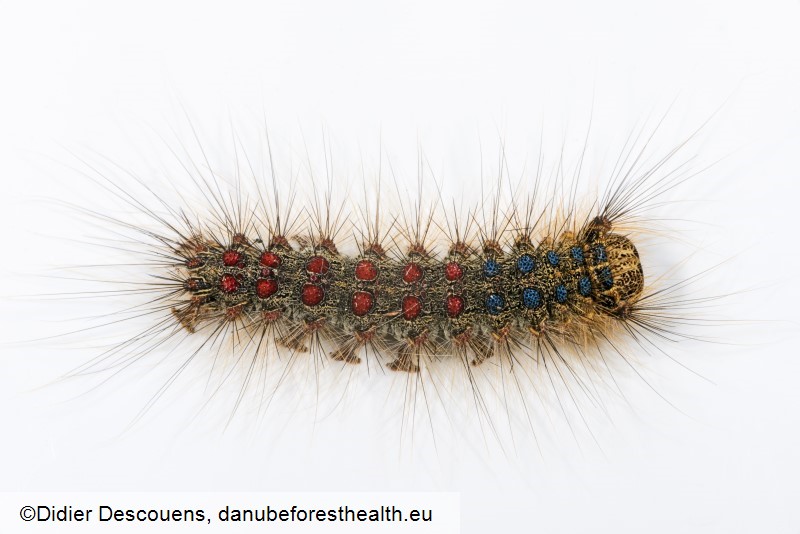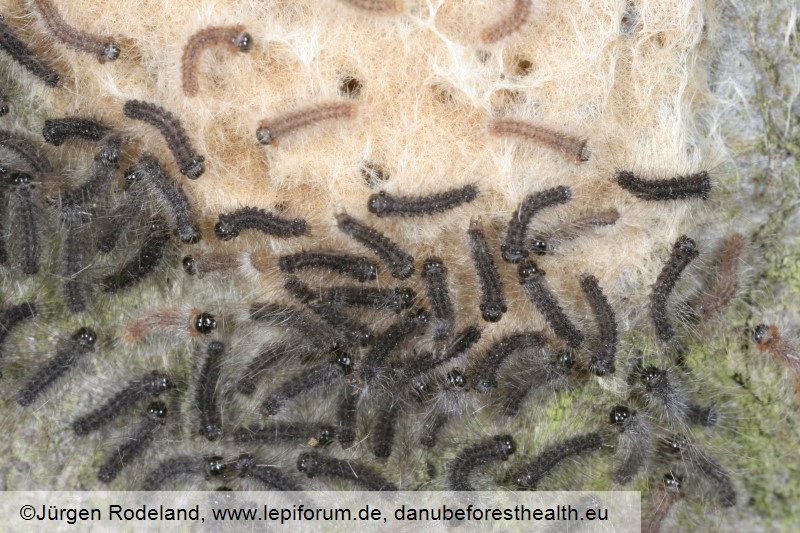Animalia
Gipsy moth
Lymantria dispar
Andreja Kavčič
|
|

Fig. 1. Defoliation of Quercus robur caused by Lymantria dispar caterpillars

Fig. 2. A Lymantria dispar female laying eggs

Fig. 3. A Lymantria dispar male

Fig. 4. An egg mass

Fig. 5. A larva

Fig. 6. Newly hatched gipsy moth larvae

Fig. 7. Lymantria dispar pupa
DETECTION PERIOD:
April to August, egg masses can be seen from September to March
DESCRIPTION:
Adults are grey to brown or creamy white moths. They measure 15–35 mm in length and 37–62 mm across the wings. Females are larger than males. They have several dark brown winding transverse lines on forewings. In European populations only males can fly. The gipsy moth develops one generation per year. The moths emerge from July to August. After mating, the female lays small, round eggs in groups (egg masses), preferably close to the ground. Eggs are protected by a thick orange-brown cover, made of female´s hair. Eggs overwinter. Larvae hatch in April and start feeding on leaves. Young larvae are black and hairy, with orange brown tubercles, each bearing a tuft of long light hairs. Older larvae have yellowish head and pairs of blue (front 5 pairs) and red (rear 6 pairs) tubercles on the dorsal side of the body. While the young larvae feed during the day the older larvae are nocturnal. A grown caterpillar is 60–70 mm long. It pupates between leaves, spun together by silky threads, in June or July. The pupa is dark brown with sparse golden hair. Female pupa is longer (15–35 mm) than the male pupa (15–20 mm).
HABITAT:
The gipsy moth occurs in warm localities in lowlands. It can be found on numerous hardwood species in natural habitats, nurseries, plantations and urban areas. Its preferred hosts are oaks (Quercus spp.). During heavy infestations the larvae can feed on conifers.
STATUS:
Lymantria dispar is native to Asia and Europe. The ReFOCUS area is part of the moth´s natural distribution area
IMPACT:
Damage is caused by larvae, which feed on leaves and cause extensive defoliation. The gipsy moth can attack almost any broadleaved tree species. It is a serious pest in forests and plantations. Repeated defoliation can kill the tree. Caterpillars cause inflammatory responses in humans.
SIMILAR SPECIES:
Due to their variable colour, the adults can be confused with other defoliating moths, for example the lackey moth (Malacosoma neustria) or the nun moth (L. monacha). However, the gipsy moth be clearly distinguished from other species in that its larvae do not produce extensive webbings or build tents, and they have unique pairs of blue and red tubercles on the dorsal side of the body. The characteristic egg masses are also a distinguishing sign.
|